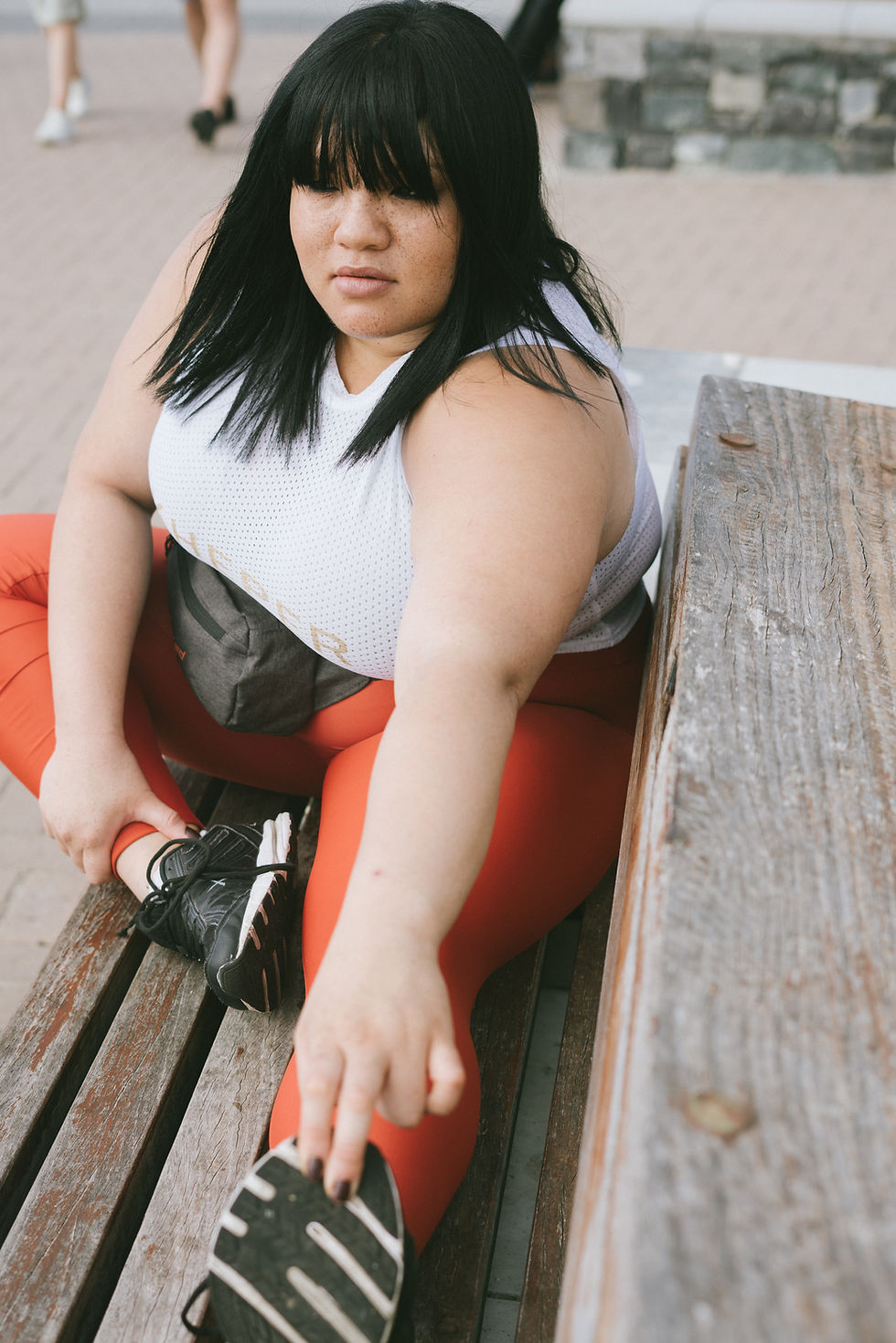6 Ways Movement & Exercise Support Your Emotional Health
- Raina LaGrand
- May 2, 2023
- 3 min read

The truth is if you exercise you will be healthier and you will feel better.
The problem is exercise is generally framed as something that your physical body needs.
And while your body does have physical needs, when moving our bodies is reduced to something like being fit it's easy to neglect how integral bodies are to other aspects of life. You only have relationships, dreams, fears, an identity, a job, a religion, and more because you have a body, after all.
And if you want those things to feel awesome tending to your emotions is really important. Here are six ways movement and exercise can support your emotional health.
Complete the stress response cycle
When you experience something stressful your body responds first with an alarm. You might notice your heart rate increase, or your chest tighten. Or maybe your eyes start shifting around and you feel frozen. This is what most of us associate the concept of stress with; the sympathetic state of fight, flight, or freeze.
In the context of today’s world, a lot of us experience pretty persistent stress. Bills, work, taking care of the kids, managing your own health. Because stress is this unrelenting it’s easy to get stuck in the alarm stage.
But if you’re able to ride it out, something else happens. Your body will activate your parasympathetic nervous system which acts like the “brakes” for the stress response. And then, your body exhausts itself and is more receptive to relaxation.
We can’t always change the demand of our careers or stop world hunger quickly enough for our body to settle, but exercise gives us the opportunity to complete the stress response cycle.
Aerobic exercise definitely takes your body through the stress cycle. Repetitive and circular movements are less intense ways to soothe anxiety. They create a sense of predictability and the feeling of being rocked like we do for children.
Get your meditation practice in
A lot of people struggle with seated meditation. If this sounds like you, you might benefit from mindfulness practices that incorporate focus.

Movement practices like yoga and tai chi are opportunities to focus your awareness on what your body is doing. You might focus on how your body feels as it moves. You might focus on what’s coming next. You might try to move without creating added tension in your body.
Even if you aren’t doing some somatic practice you can invite more mindfulness. When you are walking, on your bike, or maybe even playing sports. If there are already movement-based hobbies where you feel more mindful than usual, go with that.
Become more self aware
You can even set an intention to focus on certain qualities or themes, like balance or trust. This might look like experiments while you’re moving/exercising or observing your natural inclinations towards the theme you’re exploring. How do you find balance in your body? What’s your inner dialogue when you’re struggling?
Build confidence
Things like how your body feels or how you carry yourself (think posture) influence your thoughts and emotions.
When your body feels physically strong and you feel like you can easily move around, chances are you feel more confident. You might even feel more capable of taking on challenges and more resilient when things flop.
This isn’t about looking fit at all. Do a few squats or some wall push-ups. Feeling your muscles work might feel really yummy.
Get more comfortable with being uncomfortable
Look, exercise can be hard!
And anytime you do new things with our body it’s going to feel different. Your muscles won’t have the memory of the other activities you do on the regular. You’re going to have to be more focused. You might have to tolerate physical discomfort. Hell, you’re going to have to learn how to distinguish between discomfort and pain.
And that’s going to help your body do the same thing IRL.
Process your day
Exercise can help your brain integrate your memories and emotions by stimulating both sides of the brain.
Things like walking or swimming stimulate both sides of the brain by alternating movement on either side of the body. It’s kind of like eye movement desensitization and reprocessing, for those who are familiar.
Now it's time to make it yours!
My invitation to you is to bring compassion and ease to exercise and movement. Follow what feels good and find a balance between movement and rest. Take note if you notice shifts in your emotional world or your relationships. You got this.
Never miss out on my blog posts, be the first to know about community courses AND get a FREE embodiment practice in your inbox each month when you sign up for my monthly newsletter.

コメント